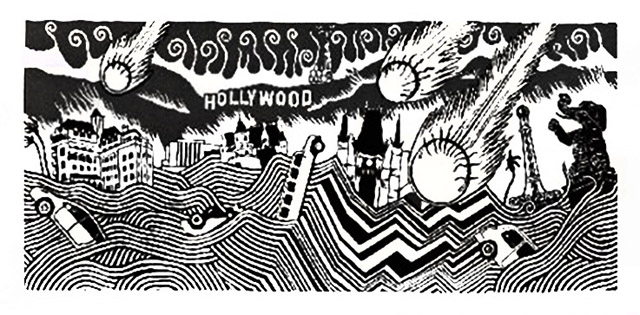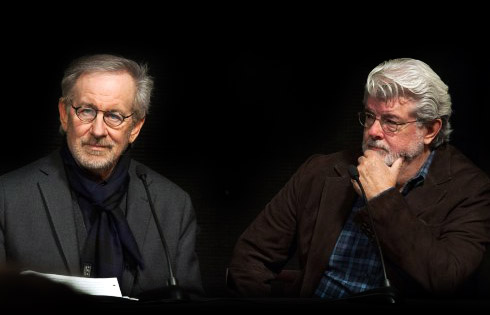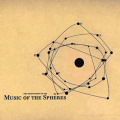*UPDATE*
The following two articles highlight PIXAR being purchased by Disney, and how it affects the scheduling for the release of the films by PIXAR.
Disney shifts Pixar film Out of 2014, Could Hit Earnings – CNBC Report Thursday, 19 Sep 2013
This report confirms that it is getting more and more difficult to produce the films at the quality level which is sufficiently good enough to go over the tipping-point threshold for market success. Such threshold is almost a binary you-have-it-or-not sort of standard, rather than any sort of a luxurious comfort one in which chooses to be in.
Disney Magic May Not Have Worked on Pixar
When the large businesses sell and buy each other, the projected earnings compared to the purchase price is what they plan out the film schedules for release, as they have to make the money back soon enough to please the shareholders.
*UPDATE*
DreamWorks and Netflix in Deal for New TV Shows – NY Times
DreamWorks Animation, trying to lessen its dependence on the volatile movie business by aggressively expanding into TV programming, has decided to forgo cable television in favor of Netflix.
Disruption: Hollywood, or Silicon Valley: Where’s the Money? – NY Times
How Does the Film Industry Actually Make Money? – NY Times
Original Article:
In this article, we shall investigate the future of Hollywood in relation to students and faculty in art schools.
Published: 2013 06 14 by HyukJae Henry Yoo
Criticism on Hollywood’s artistic and business practices have been around for as long as the film industry has existed. Such views, with their naysayer tone, have usually been brushed aside by the ongoing commercial success of the film titles and the overall industry.
Recently, however, two of the most influential “insiders” of Hollywood, George Lucas and Steven Spielberg, have come forward to announce their views on the industry’s doom.
Let’s open the discussion with the recent articles in Business and Entertainment sector:
George Lucas & Steven Spielberg: Studios Will Implode; VOD Is the Future
STEVEN SPIELBERG: The Movie Industry Is About To Implode
EXCERPT from the articles: George Lucas and Steven Spielberg talk about the “Going for the Gold” gambling mentality(and reality) of the Hollywood betting on a few large-scale $250-million blockbusters every year. Sooner or later, they say, the entire industry will go bust when those few large expensive feature films flop, and the entire industry will be re-defined. Looking into their crystal ball, they predicted the imminent arrival of a radically different entertainment landscape, including pricey movie tickets, a vast migration of content to video-on-demand and even programmable dreams.

What are the ways in which art & design educational institutions should prepare of such predictions become reality?
A recent example for this phenomenon is the bankruptcy and purchase of Digital Domain, the special effects studio once owned by James Cameron that is responsible for production of almost a hundred feature films including Titanic, Avatar, Tron, Transformers and others.
When such large production studios go bust, the result for the human side of the equation will be many talented, creative and experienced people of the industry will be out looking for jobs.
Some of them with financial resources and professional connections will set up their own production studios, which probably need to be smaller in size and has to operate in more efficient manner.
Some of them who lack the resources and connections, and are risk-averse, will inevitably be forced to take pay-cuts and often will be competing for the same jobs with the new graduates from schools.
Is it an all-negative outlook for the graduates of art schools who are aspiring to go to Hollywood to work on the next blockbuster film?
Instead of preaching about doom with no escape plans, More than likely Lucas and Spielberg are letting us know that there are important changes are to come, and those who are wise should prepare for the needed changes to adapt, survive, and thrive.
Added to the intelligence of the the Hollywood directors is the faith in the intelligence and talents of the new and upcoming talented individuals who will define the next generation.
If Hollywood is not an ideal option, what are the Alternatives and options?
Let us examine this case by looking at some examples of cinematic entertainment which draw from the similar set of elements as those required for producing feature films – ideas, storytelling, cinematography, digital and technical skills, sense of aesthetics, style, originality, etc.
Since Iron Man has been a recent production and success out of Hollywood, let us to look at a smaller version of it… the Iron Baby.
The Iron Baby by Patrick Boivin:
Here is the documentary Making of Iron Baby – 1 of 8: Shooting HDRI Stereolithography
Through these and other small-scale production examples which demonstrate artistry at high-quaity level, the myth can readily be debunked that it takes 100′s, or even 10′s of people to create high-quality production cinema. For the Iron Baby, one director/CG artist, one musician, and a baby actress(his daughter) is all that it took. How much smaller can you get?
Is it the case, then, the advantage of having more number of people primarily about speeding up the production, and less about being more creative? (This point will be discussed in an upcoming article which includes PIXAR)
Another small-scale but worthy example is a prolific body of work by the Brazilian video storytelling artist Joe Penna, the MysteryGuitarMan.
Video Puzzle – F.U.N. “We Are Young” – by Joe Penna, the MysteryGuitarMan
1200 Animated Street Stickers for George Michael’s Faith:
Oppa Gangnam Style – by Joe Penna, the MysteryGuitarMan
In some respects, this production is one of the most original work which has appeared on the internet related to the Gangnam Style amidst many parodies and take-off videos of the Gangnam.
The piece has been produced in the manner(probably intentionally) so that it can stand on its own long after the popularity of a specific referenced work fades away. It is commendable that the artist Penna puts to practice such principles, conscious or not.
After all, is it not such longevity and originality of the work which we educators try to instill in the students–at least in the school of the art and design corner of the institution?
In the next example, Penna uses straight-forward basic video editing and layout to produce this piece of him playing the Marriage of Figaro by Mozart:
Penna’s video guitar orchestra playing Mozart
Few will doubt that Joe Penna is a creative individual who is very good at what he does, producing work which is relevant to today’s global digital culture, and is able to make a living through the YouTube distribution channel.
Penna’s personal story reveals that there was a certain point in his life when he decided to consciously quit his “day job” to become a full-time artist using video as his primary medium and YouTube as his main distribution channel:
In making such a conscious career change, the viability and sustainability of such plans are usually considered: can one make enough money to make a living and support the effort of producing the art? This is a similar question that is often asked by the art-school applying students and parents.
Are there other YouTube Stars who are making a viable living by producing and distributing videos through YouTube?
Let us look at some statistics via an infographic and a few articles which show how some of the top YouTube stars are doing, from years 2008 to 2013:
How Much Money Do YouTube Stars Make? [Infographic]
How Much Do YouTube Celebrities Make?
How Much Money Do The Top Grossing YouTube Partners Make?
Another YouTube artist is Chrstine Gambito, YouTube name HappySlip, who works her comedy into her daily life and family members into her work:
Christine Gambito, aka HappySlip, Produces Jingle – Music/Comedy hybrid Production
Christine Gambito HappySlip Teaches Cup Beatbox to Nalts Kids
While we are looking at this example of the Cup Song, let us compare Gambito’s work with a larger scale production by Hollywood production effort:
Anna Kendrick “When I’m Gone” in Pitch Perfect – Director’s Cut
Since YouTube partnership arrangement results in 75 cents per 1,000 views(referred to as CPM) for the artist, Anna Kendrick’s video (19,174,251 views) would have earned $14,000, and the casual gathering of the Nalts family with Christine Gambito(390,078 views) would have earned approximately $290. At least it pays for pizza and drinks to fill the cups.
Aside from the monetary compensation, the more interesting and worthwhile aspect of this phenomenon seems to be that people simply get to see the artists’ work(or play?), and gave a chance to what the artist’s thoughts are(this is especially true in the case of the video blogging artists, who make up the majority of the Youtube stars). The monetary support gained from YouTube arrangement acts as a lubricant which makes the process possible, not usually the end goal for most of them.
Some of the qualities which define many of the YouTube artists are: distinctive personalities, highly articulate vocal communication abilities(many are often obnoxious and some cross the border of inappropriateness for educational settings), and photogenic in appearance.
Are such characteristics are the essential qualities per se(albeit immensely helpful) to be successful on YouTube?
They seem to be the noticeable common characteristics among the successful ones because many of the YouTube stars seems to not have been not formally trained in more specific craft of creativity, such as going to schools to study art, design, or film. In other words, they were not YouTube majors, but majored in something else.
But when a person does possess some of the more specialized, focused set of skills such as music, digital software, talent for craft and fabrication, etc., individuals like Joe Penna the MysteryGuitarMan can produce works which can readily utilize those skills, resulting in the “artistic” productions beyond the journal-style video blogs.
Whatever skills, knowledge, and talent one has to offer, there probably are ways to express them through channels such as YouTube over the internet.
And what of the predictions made by Spielberg and Lucas regarding the changes in the movie industry, that the movie industry may move towards the direction of the $150 per ticket, more involved entertainment experience such as the Broadway shows.
It is important to note that the such predictions are made with the assumption that the Hollywood films will be, and should be, kept showing in movie theatres. Mr. Lucas and Spielberg seem to believe that feature films of Hollywood deserve to be shown in the proper settings of the theatre setting, hence the proposal of “upgrading” the theatres for the times to come.
A Thought Experiment: Spielberg Production on YouTube
Should Spielberg and Lucas consider producing films for the internet? Films which are conceived and produced, with plans ahead of the time to be released on YouTube free of charge. With advertising and merchandise licensing, the films would still produce revenues. The productions can be smaller and quicker in scale, and there can be more number of titles released, more often. There can be one ten-minute title every day of the year, instead of one or two per year. If talented individuals like Joe Penna are hired in multitudes to work for them, it is perhaps possible.
That is, if the independent artists such as Penna would give up their “freedom” to work in Hollywood. Many probably would, while many wouldn’t.
It is not difficult to foresee that there is a stronger need for talented and skilled artists. Lucas and Spielberg’s doom prediction for Hollywood is an affirmation that there will be ever more need for creative individuals for the times to come. Not everyone has to end up working in Hollywood location. YouTube and other distribution channels on the internet, the internet technology itself, and the corresponding culture will change, and those who can stay creative and adapt will be appreciated and supported by the global society and the people by giving attention to the art.
Spielberg and Lucas clearly state that the movie industry will face some challenges and paradigm shift will occur for the times to come. For those who aspire to work in Hollywood, it would be best to have an open mind towards the times to come, while honing their skills to produce work which are highly original.














Howdy! This really is my first comment right here so I just wanted to provide a quick shout out and say I truly enjoy studying your posts. Can you recommend any other blogs/websites/forums that cover exactly the same topics? Thank you so a lot!
This can be a romantic comedy and one of the greatest smart romasntic comedies of thee 2009 film year!
This animated picture won critical praise for it
innovative usage of 3D animation, aking it seem almost lifelike.
well, if true… it will be sadly missed, hopefully tv can fill in the charisma of movies, i just don’t think youtube is cutting it yet. but it will eventually, it has too
Iron baby seriously? O.o